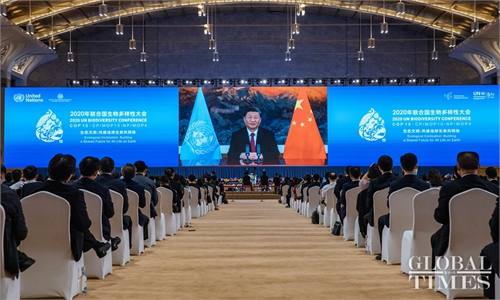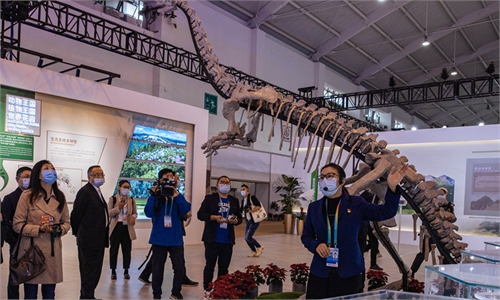IN-DEPTH / IN-DEPTH
Endangered dolphins fully protected alongside world's longest sea-crossing bridge
China's wisdom in minimizing environmental harm when building the world's longest sea crossing bridge, which runs across water that is the primary habitat for Chinese white dolphins, has served as a science-oriented inspiration for averting risks to marine life.
When the Hong Kong-Zhuhai-Macao Bridge (HZMB) was unveiled in October 2018, a nearby pod of playful and adorable Chinese dolphins - nicknamed the "giant panda of the sea" - showed how their reserve was fully protected.
There have been many efforts by the design team to control the ecological impact of the bridge, under the guidance of national-level biodiversity programs.
To meet the Chinese government's priority to preserve the natural habitat for white dolphins, the construction of the HZMB that started in 2009 devoted funds of 340 million yuan ($52.76m) for the protection efforts.
The rare Chinese white dolphin is under first class state protection, and primarily lives in the Pearl River Estuary in southeastern China.
Meng Fanchao, chief designer of the bridge, said in a recent exclusive interview with the Global Times that the team constantly revised design schemes to minimize disturbance to the dolphins, such as shortening the construction period and cutting the number of piers that dolphins could collide with.
Researchers have identified more than 2,000 Chinese white dolphins in the Pearl River Estuary since 2011.
For a long period, water traffic in the busy shipping channel has been a problem as over 40,000 vessels pass through each year, and pollution in the estuary is also a potential threat.
Environmentalists were concerned the construction of the 55-kilometer bridge could cause further damage as it crosses the core area of the dolphin's natural reserve.
But what surprised the public is that more white dolphins seem to have appeared since the bridge was built.
The latest official data suggests that about 2,500 dolphins had been seen by June 2020, an increase since the opening of the bridge.
This is largely thanks to innovative and optimized construction plans, close research and monitoring of dolphins, and the joint efforts of the governments of Hong Kong, Macao and Zhuhai.
Meng told the Global Times that the construction team set a goal from the very beginning to "keep the dolphins from decreasing and moving." In order to protect the "panda of the sea," the HZMB team has been constantly optimizing its design, shifting most construction work to land processing to minimize the time spent at sea.
"We built artificial reefs to achieve this, and we found that the artificial reefs allowed shrimp and small fish to thrive, providing a richer food source for the dolphins," Meng said.
Reducing the number of people working offshore also decreased the marine debris contaminating the marine environment for dolphins, said Meng.
The construction team was not allowed to conduct large-scale excavation work that could cause floating rubbish during the peak breeding season for white dolphins from April to August.
The number of piers were strictly curtailed from an initial 318 to 224, Meng also noted.
"Construction vessels must have the awareness to avoid dolphins. When dolphins block our way, we prefer to take a detour rather than disturbing them. The construction team took care of these little creatures like little kids," said Meng.
Workers' vigilance was important during the construction, and was helped by training and education.
Media reports said that during the construction period, researchers tracked the species more than 300 times, took over 300,000 photos, identified more than 1,000 Chinese white dolphins, and organized 29 training sessions for a total of 2,544 participants to learn more about the protection efforts.
Also, a white dolphin conservation alliance initiated by authorities in Guangdong Province, Hong Kong and Macao is intended to boost cooperation among conservation groups in the three regions, according to the administration of the Pearl River Estuary Chinese White Dolphin Reserve, Xinhua News Agency reported.
Routine rescue and joint emergency rescue are typical missions for the alliance. It also conducts research on the dolphins' population, lifestyle, migration routes and physiology.
How to balance efficiency and economic benefits with environmental protection in major infrastructure projects has been a test of China's wisdom, said Meng. The HZMB Bridge became a project with complex technology and the highest environmental protection requirements and strictest construction standards in the history of Chinese bridges.
Monitoring and surveys of the dolphins in Lingding Bay and in their other habitats are still going on, Meng said. "We are now confident to say that the HZMB Bridge takes the lead in environmental protection among world-class super-large bridges."




